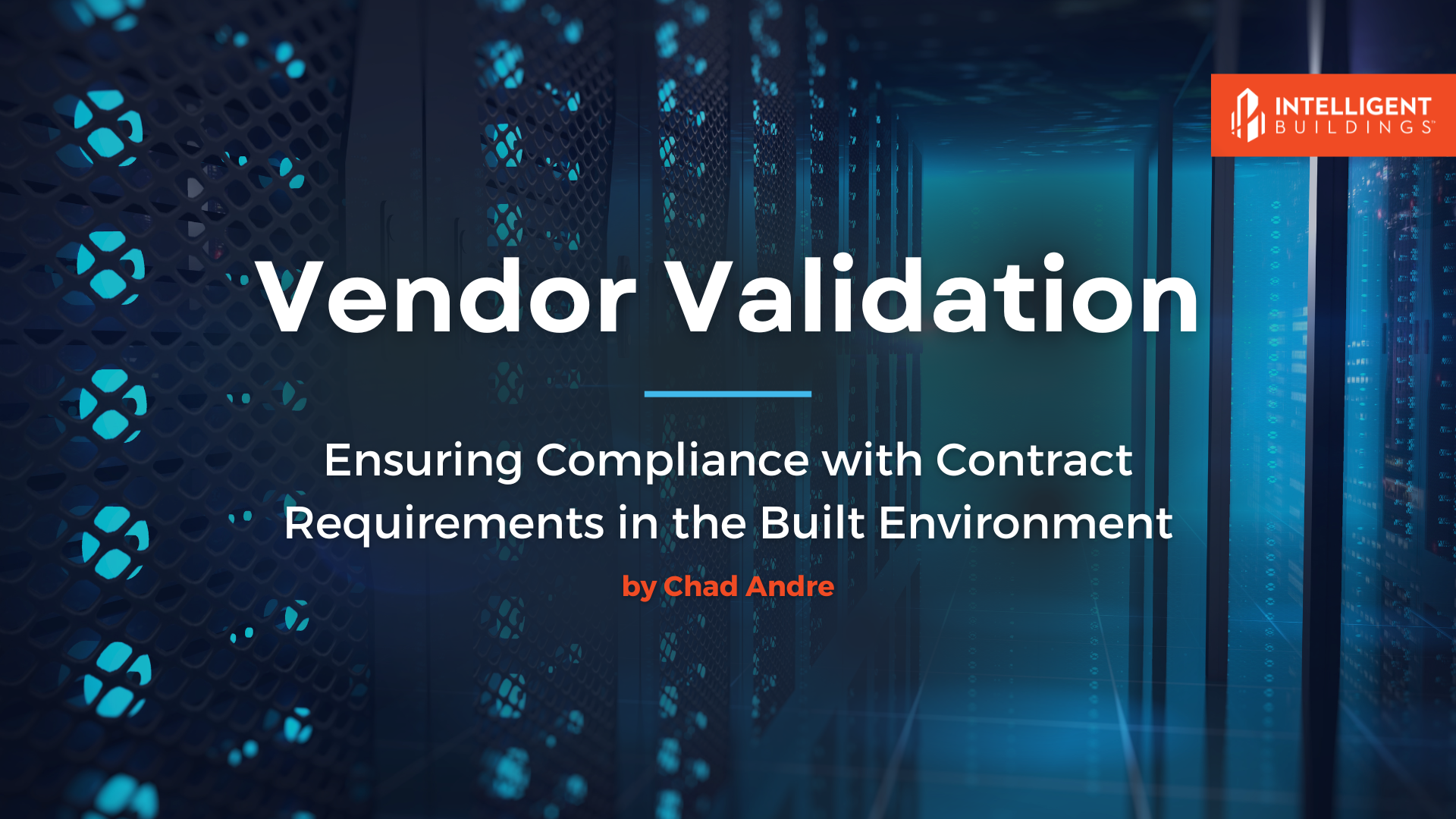
by Chad Andre
In the realm of building management, it’s crucial to make sure vendors meet the specific requirements set out in their contracts. This is key to maintaining operational efficiency, occupant comfort, and aligning with larger goals like sustainability and technological advancement. Vendor Validation is the process of verifying that vendors adhere to their contractual obligations, ensuring that the building’s systems and infrastructure function as intended. Here’s how to effectively manage this process:
Defining Clear Contract Requirements
The foundation of successful vendor validation is setting clear expectations from the outset. This means outlining technical specifications, performance standards, regulatory compliance, and how new systems will integrate with what’s already in place. For instance, when specifying requirements for HVAC systems or smart building technologies, it’s vital to include details on energy efficiency and compatibility with existing building management systems (BMS). This clear documentation helps communicate what’s expected and serves as a standard against which performance can be measured.
Evaluating Vendor Capabilities
Once the requirements are set, the next step is to assess whether potential vendors can actually meet them. This involves a thorough review of the vendors past performance, financial health, and relevant experience. Consider previous work on similar projects and the vendors grasp of current technologies. Visiting sites where the vendor’s systems are already operational can offer valuable, practical insights into their capabilities and reliability, ensuring they can deliver on what they promise.
Establishing a Rigorous Validation Process
A robust validation process is essential to confirm that vendors fulfill their contractual commitments. This includes setting specific key performance indicators (KPIs) and conducting regular inspections, tests, and performance checks. For example, if energy efficiency is a key criterion, regular energy audits can verify that the systems meet the agreed standards. Thorough monitoring ensures compliance and highlights any areas where improvements are needed.
Promoting Transparency and Accountability
Transparency and accountability are critical components of the vendor relationship. It’s important to maintain open lines of communication, provide regular updates, and ensure all parties clearly understand the contract terms. Additionally, having a structured approach to managing deviations from the contract, including potential remedies or penalties, is crucial. This clarity helps prevent misunderstandings and promotes a collaborative approach to resolving any issues that arise.
Fostering Continuous Validation and Improvement
Lastly, creating a system for ongoing validation helps maintain compliance over the long term. This includes regular reviews of vendor performance, updating contract terms as needed, and staying engaged with vendors to address new challenges. Viewing vendor relationships as partnerships focused on continuous improvement can lead to better outcomes, ensuring that vendors consistently meet their obligations and contribute to the project’s overall success.
By following these principles, building managers and owners can effectively manage vendor validation, ensuring high-quality products and services that meet their specific needs and contractual requirements.